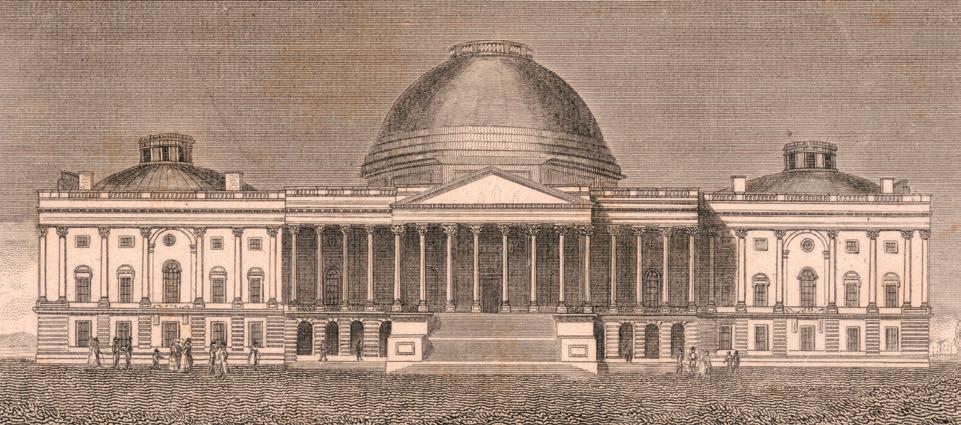Old Man Eloquent and the GAG RULE

"Order! Order!"
The object of their scorn was the slight form standing defiantly at desk number 203. Two and a half years after leaving the White House, John Quincy Adams was back.
Adams's one-term presidency from 1825 to 1829 had been a struggle of partisan politics. His failed race for a second term had been bitter and nasty. His loss had convinced his family and colleagues that he had fought his last fight. Adams himself vowed, "to go into the deepest retirement and withdraw from all connections with public affairs." But the residents of the Massachusetts district in which Adams lived had other ideas. Impressed with his courage and integrity, they had elected him to the U.S. House of Representatives.
When questioned about his new position, Adams dismissed the idea that it was degrading for a former president-the leader of the nation to serve as a congressman. For Adams, public service was an honorable duty. "No election or appointment conferred on me ever gave me so much pleasure," he exclaimed in his diary. On December 5, 1831, the 64-year-old Adams took his seat and began a new, fateful chapter in his public life.
Through the early 1800s, slavery had grown into a divisive issue in U.S. politics. Other nations already had ended or limited the practice. Slaveholders across the American South grew increasingly fearful of the same fate and the threat it posed to their way of life on plantations and farms. At the same time, the idea of abolition-ending slavery and freeing all slaves began to spread steadily through northern states. Antislavery supporters bombarded Congress with petitions. Early petitions called for the end of slavery only in the District of Columbia. Eventually, calls grew to abolish the institution across the South.
This story is from the {{IssueName}} edition of {{MagazineName}}.
Start your 7-day Magzter GOLD free trial to access thousands of curated premium stories, and 9,500+ magazines and newspapers.
Already a subscriber ? Sign In
This story is from the {{IssueName}} edition of {{MagazineName}}.
Start your 7-day Magzter GOLD free trial to access thousands of curated premium stories, and 9,500+ magazines and newspapers.
Already a subscriber? Sign In

nellie Bly Journalist
nellie Bly's first newspaper articles appeared in print when she was just 20 years old.

Arabella Mansfield -Lawyer
Arabella Mansfield started out life as Belle Babb (1846-1911). She grew up in a Midwest family that valued education. In 1850, her father left to search for gold in California. He died in a tunnel accident a few years later.

Sarah Josepha Hale Editor
Long before Vogue or Glamour caught women's attention, Godey's Lady's Book introduced the latest fashions.

Louise Blanchard Bethune - Architect
Louise Blanchard Bethune (1856-1915) showed early promise in math. Lucky for her, her father was the principal and a mathematics teacher in a school in Waterloo, New York. Instead of going to school, Louise's father taught her at home until she was 11 years old. She also discovered a skill for planning houses. It developed into a lifelong interest in architecture and a place in history as the first professional female architect in the United States.

Sojourner Truth Speaker
There was a time when slavery wastes abolished the institution over a number of decades. New York abolished slavery in 1827. Isabella Baumfree (c. 1797-1883) was born enslaved in Hurley, New York. When she was nine, she was taken from her parents and sold. She then was sold several more times. Some of her owners were cruel and abused her. During that time, she had several children.

Getting Started
In this editorial cartoon, a young 19th-century woman must overcome the obstacle of carrying a heavy burden while climbing a multirung ladder before she can achieve \"Equal Suffrage.\"

Leonora M. Barry - Investigator
When Leonora M. Barry (1849-1923) was a young girl, her family left Ireland to escape a famine. They settled in New York. Barry became a teacher. In 1872, she married a fellow Irish immigrant. At that time, married women were not allowed to work. So, Barry stayed home to raise their three children.

Finding a New Path
For many Americans, this month's mystery hero represents the ultimate modern trailblazer. She is recognized by just her first name.

The Grimké Sisters Abolitionists
Every night, Dinah was supposed to brush the E hair of her mistress, Sarah Moore Grimké (1792-1873). But one night, 12-year-old Sarah stopped Dinah. She wanted to help Dinah instead. They had to be quiet so they wouldn't get caught. It was 1804 in Charleston, South Carolina. The Grimkés were among Charleston's major slaveholding families. Strict laws regulated the behavior of both master and enslaved people.

Frances Willard Leader
During Frances Willard's lifetime (1839-1898), she was the best-known woman in America: She headed the largest women's organization in the worldthe Woman's Christian Temperance Union (WCTU). In that role, her abilities shone as a social activist, a dynamic speaker, and a brilliant organizer. She educated women on how to run meetings, write petitions, give speeches, and lobby state and federal legislators.
